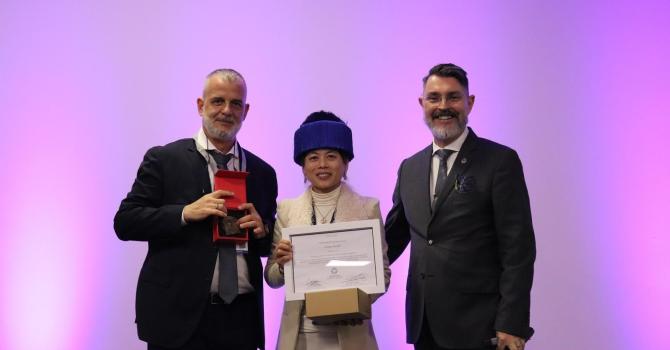A Wake-up Call on Man-made Climate Change––HydroMet Group Publishes Paper on Distorted Monsoon Climate in Future East Asia
Dr. Lun DAI (post-doc) and Mr. Tat Fan CHENG (PhD candidate), who lead the East Asian Monsoon research under the supervision of Prof. Mengqian LU of the Department of Civil and Environmental Engineering, have published a paper in the prestigious academic journal npj Climate and Atmospheric Science.
The paper, entitled “Anthropogenic warming disrupts intraseasonal monsoon stages and brings ‘dry-get-wetter’ climate in future East Asia,” is timely published amidst celebrations of the Chinese New Year––the beginning of a farmer’s calendar, reminding us of the fact that we live in meteorologically sensitive and dependent agrarian societies. Dai et al.’s study not only mirrors this fundamentally anthropogenic aspect of climate studies, but also illuminates an important realization of the Anthropocene: how will our activities and behaviors, as manifest in anthropogenic warming, impact the monsoon climate, and how, in turn, will it all come back to affect us?
Given the eight monsoon stages throughout a year as discovered in their previous work (Dai et al. 2021), Dai et al. (2022) reveal, for the first time, the projected change of these intraseasonal stages under climate change. They have a particularly enlightening discussion on the ways that seasonality, monsoons and other weather patterns will change, based on a total of 14 medium-to-high resolution climate models under medium stabilization (RCP4.5) and no-climate-policy scenarios (RCP8.5).
Highlights of their research include: 1) the summer and autumn seasons will lengthen, while winter will be briefer, delayed and less potent; 2) while future wetter climates may seem beneficial to agriculture, East Asia (especially the Yangtze basin) will be highly prone to floods given 14–20 more days of heavy precipitation during the rainy season under the worst-case scenario; 3) areas that are historically dry during a warm-season monsoon stage are expected to receive more rains––the ‘dry-get-wetter’ paradigm; 4) Drought and extreme weather swings will become more frequent during the transition seasons, potentially disrupting sowing and harvesting. The findings contained in the paper are contextualized to East Asia, echoing npj Climate and Atmospheric Science’s commitment to publishing contents that are more regionally relevant and specific.
npj Climate and Atmospheric Science is an open-access journal that covers topics in atmospheric science and climate-related physics, chemistry and biology––for instance, climate dynamics, climate change, ocean dynamics, hydrology, pollution, and atmosphere-ocean and atmosphere-land interactions. The multidisciplinary journal exposes Dai et al.’s work to a much wider audience, including, in particular, policymakers, stakeholders and other interested individuals and relevant parties, thereby generating and facilitating more awareness of very important issues that are indivisible from our lives and livelihoods.
The paper is accessible through this link: https://www.nature.com/articles/s41612-022-00235-9



